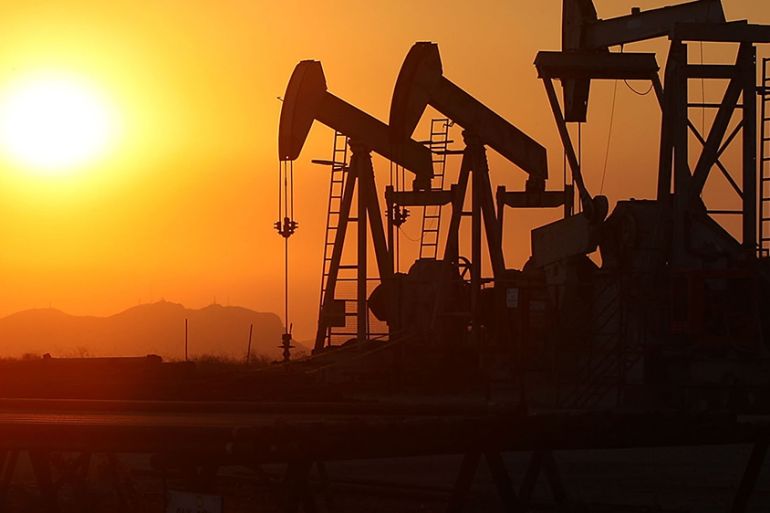Oil prices are up, and could go even higher
Geopolitical tensions with Iran and a potential interest rate cut by the US Federal Reserve sent US markets higher.

Oil prices soared more than five percent on Thursday after Iran shot down a United States military drone, raising fears of a military confrontation between Tehran and Washington.
Also supporting oil prices were a drop in US crude inventories and expectations that the US Federal Reserve could cut interest rates at its next meeting, stimulating growth in the US, which is the world’s largest oil-consuming country.
Keep reading
list of 4 itemsStocks slide on Middle East tensions as hope crisis contained stems losses
As US inflation ticks back up, it could impact the presidential election
Will the US unemployment rate continue at historic lows?
“It’s a confluence of events: there’s a looming easing cycle which is going to hit the dollar and prop up commodity prices, and there are also the tensions with Iran,” said John Kilduff, a partner at Again Capital LLC in New York.
The security premium built into oil prices could rise further as tensions between the US and Iran heat up, he said.
Brent crude, the global benchmark, rose $2.63, or 4.3 percent, closing at $64.45 a barrel. US West Texas Intermediate (WTI) crude rose $2.89, or 5.4 percent, to $56.65 a barrel.
Brent’s premium over WTI narrowed to its lowest margin since April. The change came as US crude rose more quickly than Brent due to the tailwind provided by potential Federal Reserve policy, said Bob Yawger, director of futures at Mizuho Americas in New York.
US President Donald Trump played down Iran’s downing of a US military drone, saying he suspected it was shot by mistake and that “it would have made a big difference” to him if the remotely controlled aircraft had been piloted.
While the comments appeared to suggest Trump was not eager to escalate the latest in a series of incidents with Iran, he also warned that “this country will not stand for it”.
Tehran said the unarmed Global Hawk surveillance drone was on a spy mission over its territory, but Washington said it was shot down over international airspace.
Tension has been rising in the Middle East – the source of more than 20 percent of the world’s oil output – since June 13 attacks on two tankers near the Strait of Hormuz, a crucial passageway for oil supplies in the Gulf. While Washington blamed Tehran for the tanker attacks, Iran denied any role.
Concern about slowing economic growth and a US-China trade dispute has pulled oil prices lower in recent weeks. Brent reached a 2019 high of $75 per barrel in April.
The prospect of further rate cuts could prove the more significant factor for oil, said Petromatrix analyst Olivier Jakob, should Iran-US tension not escalate.
“The Fed and the cutting of rates is something that will provide more substantial support,” he said.
Gulf producers belonging to the Organization of the Petroleum Exporting Countries will keep their July oil production within their target despite the current pact for a global supply cut expiring at the end of June, OPEC sources said, signaling that Gulf exporters are reluctant to boost supply.
OPEC and allies including Russia look set to extend a deal on cutting 1.2 million barrels per day of production. The coalition known as OPEC+ agreed this week to convene on July 1 and 2, ending a month of wrangling about the timing of this meeting.